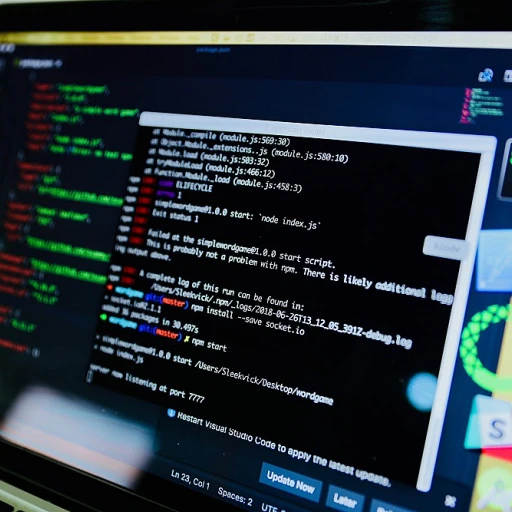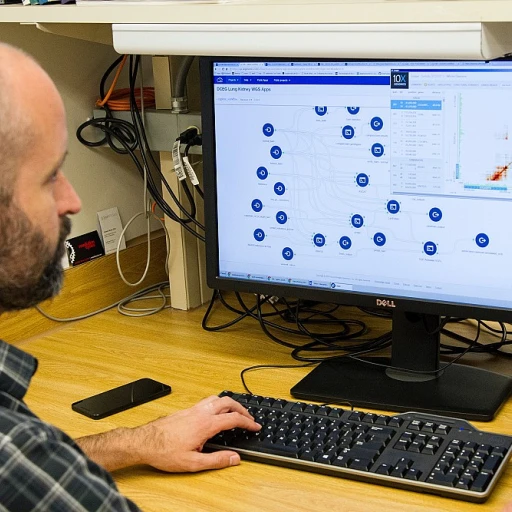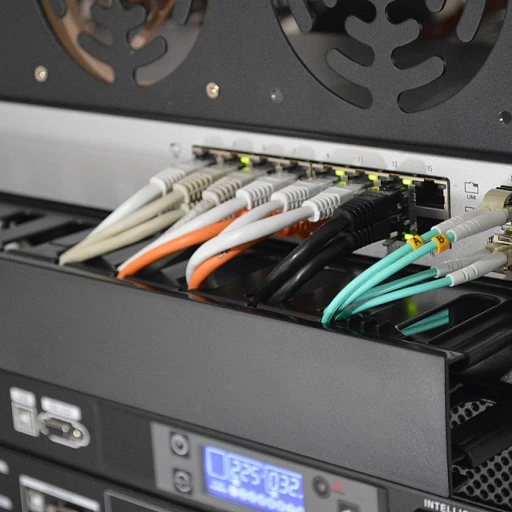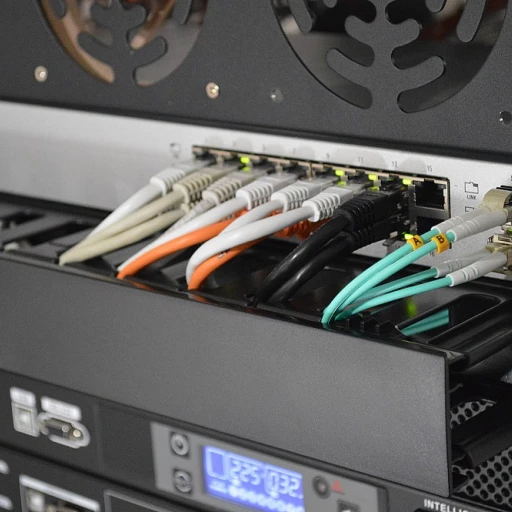
The Role of AI in Software Security
The Increasing Importance of AI in Safeguarding Software
As the digital landscape evolves, artificial intelligence is becoming a cornerstone in enhancing software security. At the recent Washington AI Security Summit, experts highlighted the pivotal role AI plays in fortifying software against emerging threats. The integration of AI into security measures is not just a trend but a necessity, driven by the rapid advancements in technology and the growing sophistication of cyber threats.
AI's ability to process vast amounts of data and identify patterns that might elude human analysts is transforming the cybersecurity landscape. This capability is crucial for detecting anomalies and potential breaches in real-time, offering a proactive approach to security. Institutions like Carnegie Mellon and the University of California are at the forefront of developing AI-driven security solutions, emphasizing the importance of academic contributions to this field.
Moreover, the summit underscored the need for collaboration between government bodies, such as the Department of Energy and the National Security Agency, and private sector entities. This partnership is vital for establishing robust security frameworks that leverage AI's potential. The discussions also touched on the role of technology policy in shaping the future of AI in software security, highlighting the importance of bipartisan policy efforts to ensure national security.
For businesses, the integration of AI into their security infrastructure is not just about protection but also about innovation. AI-driven security solutions offer a competitive edge by safeguarding intellectual property and customer data, which are critical assets in today's digital economy. As we look to the future, the role of AI in software security will only grow, necessitating ongoing research and development to stay ahead of potential threats.
For more insights on how AI is transforming various industries, including banking, you can explore how conversational AI is transforming the banking industry.
Key Takeaways from the Summit
Highlights from the Washington AI Security Summit
The recent Washington AI Security Summit brought together a diverse group of experts from various fields, including technology, government, and academia, to discuss the future of software security in an AI-driven world. The event was a melting pot of ideas, with representatives from institutions like Carnegie Mellon and the University of California sharing their insights on the evolving landscape of cybersecurity.
Key Discussions and Themes
One of the central themes of the summit was the role of artificial intelligence in enhancing software security. Experts emphasized the importance of integrating AI into existing security infrastructures to better protect against emerging threats. The discussions also highlighted the need for robust technology policy frameworks to guide the development and deployment of AI-driven security solutions.
- Data and Intelligence: The summit underscored the critical role of data in shaping AI security measures. Participants discussed how leveraging data intelligence can lead to more proactive and predictive security strategies.
- Collaboration Across Sectors: There was a strong emphasis on the need for collaboration between the private sector, government, and academia. This collaboration is seen as essential for developing comprehensive security policies and best practices.
- Innovation and Development: The summit showcased several innovative solutions aimed at enhancing cybersecurity. These innovations are expected to play a pivotal role in the future development of secure software systems.
Insights from Industry Leaders
Industry leaders and policymakers shared their perspectives on the challenges and opportunities presented by AI in software security. The discussions highlighted the importance of a bipartisan policy approach to address national security concerns effectively. Additionally, the role of educational institutions, such as state universities and institutes of technology, was emphasized in fostering the next generation of cybersecurity experts.
For more detailed insights into the discussions and themes from the summit, you can explore emerging software technologies that are shaping the future of this field.
Emerging Security Challenges in AI-Driven Software
New Security Threats in AI-Driven Software
As artificial intelligence continues to integrate into software development, the landscape of security challenges evolves rapidly. At the Washington AI Security Summit, experts from leading institutions like Carnegie Mellon and the University of California highlighted the pressing need to address these emerging threats.
AI-driven software introduces complexities that traditional cybersecurity measures struggle to manage. The dynamic nature of AI systems, which learn and adapt over time, poses unique challenges for maintaining secure infrastructure. This adaptability, while beneficial for innovation, can also be exploited by malicious actors.
Data Vulnerabilities and Policy Implications
Data security remains a critical concern. As AI systems process vast amounts of data, ensuring its integrity and confidentiality becomes paramount. The summit underscored the importance of robust data protection policies, urging collaboration between government bodies and the private sector. The role of national security agencies and the Department of Energy in shaping technology policy was emphasized, highlighting a bipartisan approach to cybersecurity.
AI's Impact on Cybersecurity Strategies
AI's integration into cybersecurity strategies is both a challenge and an opportunity. While AI can enhance threat detection and response, it also requires new strategies to safeguard against AI-specific vulnerabilities. The summit showcased innovative approaches from institutions like the Institute of Technology and State University, focusing on developing AI systems that are resilient to attacks.
In conclusion, the future of software development in an AI-driven world demands a proactive approach to security. As highlighted by the executive director of a leading technology institute, continuous collaboration between academia, business, and government is essential to navigate these challenges effectively.
Innovative Solutions Presented at the Summit
Revolutionary Approaches to AI Security
The Washington AI Security Summit showcased a variety of innovative solutions aimed at bolstering software security in an AI-driven world. These solutions are crucial as the integration of artificial intelligence into software systems continues to expand, posing new challenges and opportunities for developers and policymakers alike.
AI-Powered Cybersecurity Tools
One of the standout innovations presented at the summit was the development of AI-powered cybersecurity tools. These tools leverage machine learning algorithms to detect and respond to threats in real-time, significantly enhancing the security infrastructure of organizations. By analyzing vast amounts of data, these systems can identify patterns and anomalies that might indicate a security breach, allowing for swift action to mitigate potential risks.
Collaborative Efforts for Enhanced Security
Collaboration between universities, technology companies, and government agencies was emphasized as a key strategy for advancing AI security. Institutions like Carnegie Mellon and the University of California are at the forefront of research in this area, working alongside industry leaders to develop best practices and policies that address the unique challenges posed by AI-driven software. This collaborative approach ensures that innovations are not only technologically advanced but also aligned with national security priorities.
Policy Frameworks and Government Initiatives
The summit also highlighted the importance of robust policy frameworks to support the secure development and deployment of AI technologies. Government initiatives, particularly those from the Department of Energy and the National Security Agency, are focusing on creating guidelines that balance innovation with security. These policies are designed to protect critical infrastructure while fostering an environment where technological advancements can thrive.
Future Directions in AI Security
As AI continues to evolve, the need for innovative security solutions will only grow. The insights gained from the Washington Security Summit underscore the importance of ongoing research and development in this field. By fostering a culture of innovation and collaboration, the United States can lead the way in creating secure, AI-driven software systems that benefit businesses, government, and society as a whole.
The Future of Software Development in an AI-Driven World
AI's Influence on Software Development
The future of software development is being reshaped by artificial intelligence, as highlighted during the Washington AI Security Summit. AI is not just a tool but a transformative force that is redefining how software is created, tested, and deployed. This transformation is evident in the way AI is integrated into development processes, enhancing efficiency and innovation.
Integration of AI in Development Processes
AI's integration into software development is leading to more intelligent systems capable of self-learning and adaptation. This shift is supported by advancements in technology and infrastructure, as well as the growing emphasis on cybersecurity. Universities and research institutes, such as Carnegie Mellon and the University of California, are at the forefront of this evolution, driving research and development in AI technologies.
Policy and Security Considerations
As AI becomes more embedded in software development, policy and security considerations are paramount. The summit underscored the importance of developing robust technology policies that address national security concerns. Government agencies and the private sector are working together to establish best practices and standards that ensure the safe and ethical use of AI in software development.
Collaboration Across Sectors
The collaboration between government, academia, and business is crucial in navigating the challenges and opportunities presented by AI. Initiatives led by the Department of Energy and other state and national bodies are fostering a bipartisan approach to AI policy and cybersecurity. This collaborative effort is essential for creating a secure and innovative environment for software development.
Looking Ahead
As we look to the future, the role of AI in software development will continue to expand. The insights gained from the Washington Security Summit highlight the need for ongoing dialogue and cooperation among all stakeholders. By embracing AI's potential while addressing its challenges, the software industry can achieve unprecedented levels of innovation and security.
Expert Opinions on AI and Software Security
Expert Insights on AI and Software Security
At the Washington AI Security Summit, experts from various sectors shared their insights on the evolving landscape of AI-driven software security. These discussions highlighted the critical role of artificial intelligence in shaping the future of technology and cybersecurity.
According to a leading executive director from a renowned institute of technology, the integration of AI in software development is not just a trend but a necessity. This sentiment was echoed by representatives from both the government and the business sectors, who emphasized the importance of AI in enhancing national security and protecting critical infrastructure.
One of the key points raised was the need for robust technology policy frameworks. A vice president from a major technology company stressed the importance of bipartisan policy efforts to ensure that AI technologies are developed and deployed responsibly. This aligns with the summit's focus on establishing best practices for AI in software security.
Academics from institutions like Carnegie Mellon and the University of California contributed to the conversation by discussing the role of science and technology in advancing AI capabilities. They highlighted ongoing research at universities that aims to address emerging security challenges, as previously discussed in the summit's sessions.
The director of a prominent cybersecurity institute pointed out that while AI offers significant benefits, it also introduces new vulnerabilities. This dual nature of AI requires a balanced approach to innovation and security, ensuring that advancements do not outpace the development of effective safeguards.
In conclusion, the expert opinions shared at the summit underscore the importance of collaboration between the state, national, and business sectors. As AI continues to transform the software industry, these partnerships will be crucial in navigating the complex landscape of AI-driven software security.















